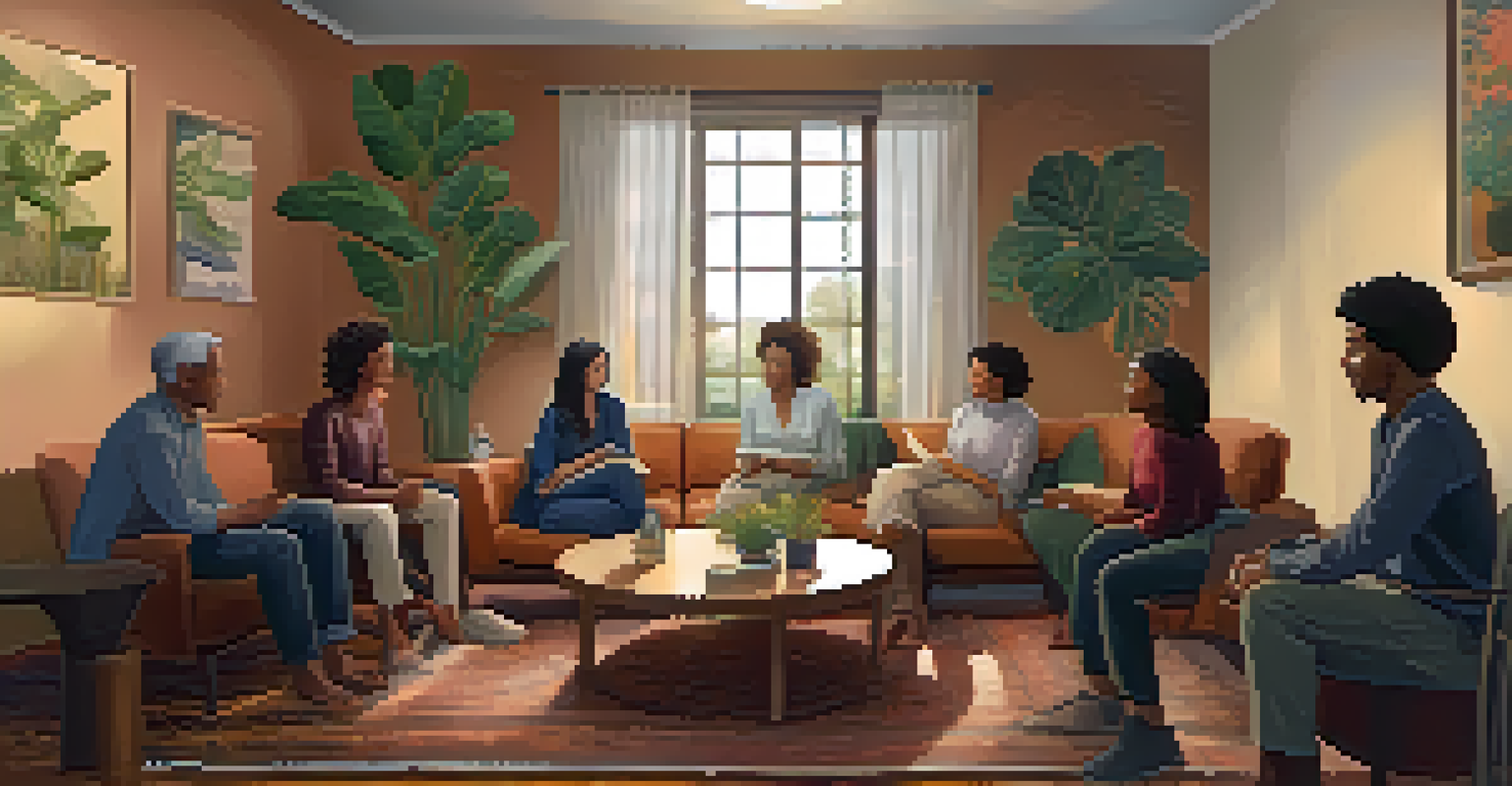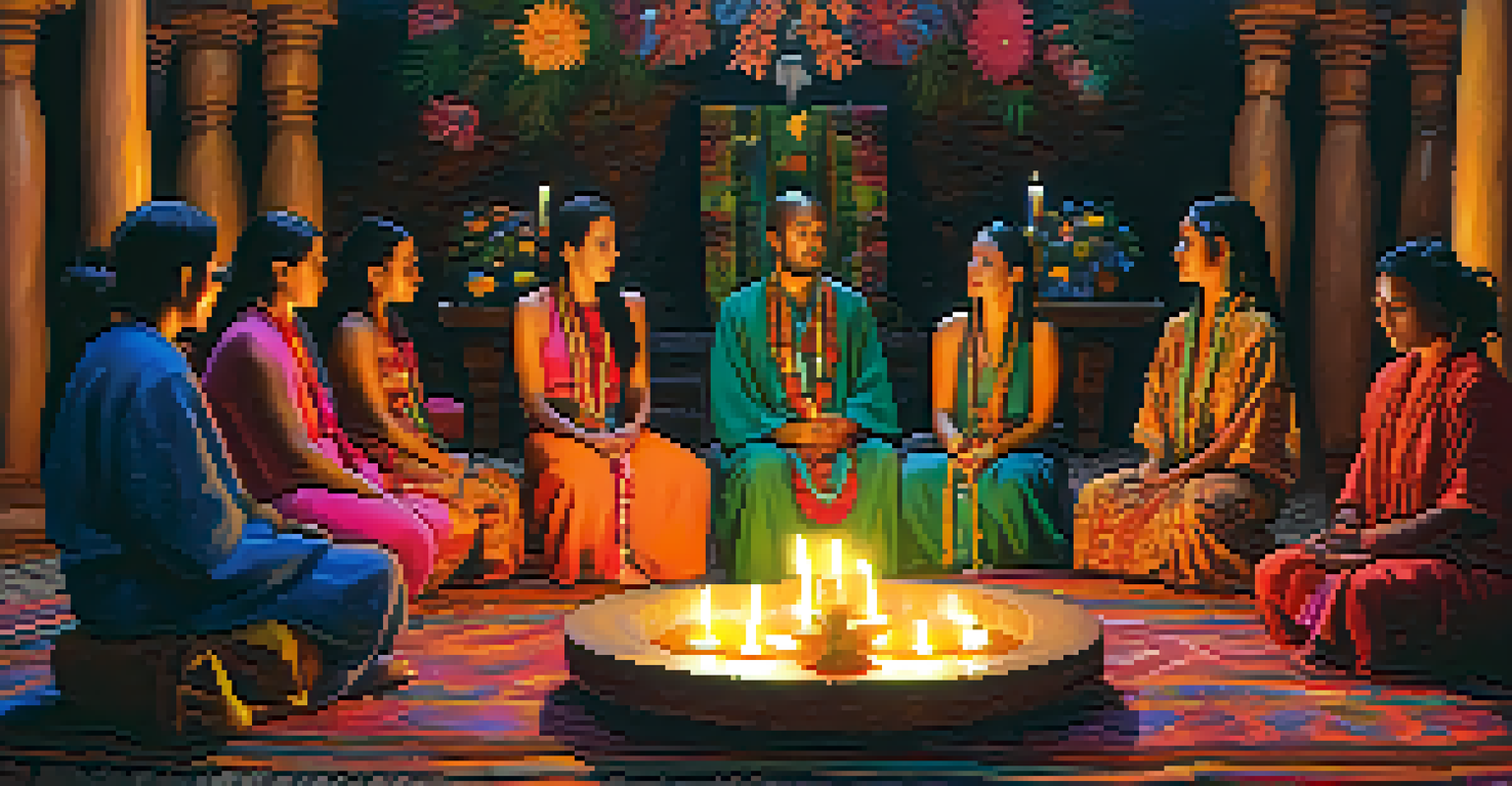Social Connectivity: The Entheogenic Experience Explained

What Are Entheogens and Their Role in Social Connectivity?
Entheogens, often referred to as psychedelics, are substances that can induce altered states of consciousness. These experiences have been used in various cultures for spiritual and communal purposes. When people consume these substances together, they often report feelings of connection and unity, enhancing social bonds.
The use of psychedelics, when properly integrated, can foster deep connections between individuals and enhance social bonding.
The term 'entheogen' comes from the Greek words meaning 'generating the divine within.' This highlights the transformative potential of these substances, as they can lead to profound personal insights and shared experiences. For many, these insights foster a stronger sense of community and understanding among participants.
By experiencing heightened emotions and shared visions, individuals can find common ground, deepening their relationships. This is particularly evident in ceremonies or gatherings where entheogens are utilized, creating a unique environment for social connectivity.
Historical Context: Entheogens in Indigenous Cultures
Throughout history, many indigenous cultures have used entheogens in rituals to forge community ties. For instance, the use of peyote among Native American tribes has long been a means of spiritual connection and collective healing. These practices highlight the importance of shared experiences in fostering social bonds.

Similarly, the Amazonian tribes have utilized ayahuasca ceremonies not just for personal insight but as a way to strengthen community relationships. The group dynamic during these ceremonies often leads to a deeper understanding of one another, reinforcing social structures and support systems.
Entheogens Enhance Social Bonds
Entheogens can foster feelings of connection and unity among individuals, leading to deeper social relationships.
These historical precedents illustrate that the use of entheogens is not a modern fad but rather a continuation of ancient traditions aimed at enhancing social connectivity. They serve as a reminder of the enduring human need for community and shared experiences.
The Science Behind Entheogens and Social Bonds
Research has shown that entheogens can alter brain chemistry, promoting feelings of empathy and connection. Substances like psilocybin and MDMA have been found to enhance emotional processing, making individuals more receptive to others' feelings. This biological response can lead to stronger social bonds.
Entheogens can help a person understand their place within the community, bridging the gap between the self and the collective.
One notable study indicated that participants who consumed psilocybin during a group setting reported increased feelings of trust and bonding. These experiences can create a sense of collective identity, where individuals feel part of something larger than themselves, enhancing their social networks.
The neurochemistry of entheogens also promotes the release of oxytocin, often referred to as the 'love hormone.' This hormone plays a crucial role in social bonding and trust, further explaining why entheogenic experiences can lead to deeper connections among individuals.
Modern Applications: Entheogens in Therapeutic Settings
In recent years, there has been a resurgence of interest in using entheogens for therapeutic purposes. Clinics and therapists are exploring how these substances can facilitate healing and social connectivity in clinical settings. This approach often involves group therapy sessions where entheogens are administered under professional supervision.
Participants in these settings often find themselves sharing profound insights and emotional experiences, leading to a sense of camaraderie. This shared journey can be incredibly powerful, as individuals support one another through their healing processes, fostering connections based on vulnerability and empathy.
Indigenous Use of Entheogens
Many indigenous cultures have historically used entheogens in rituals to strengthen community ties and promote collective healing.
The therapeutic use of entheogens not only addresses individual traumas but also builds a supportive community among participants. This is a testament to the potential of entheogens to enhance social connectivity in modern society.
Entheogenic Retreats: A New Trend in Social Connectivity
Entheogenic retreats have gained popularity as individuals seek deeper connections with themselves and others. These retreats typically involve guided experiences with entheogens, aimed at fostering personal growth and community bonding. Participants often leave with not only personal insights but also new friendships.
During these retreats, individuals engage in group activities, sharing meals and experiences, which enhances social bonds. The collective nature of the experience encourages openness and trust, creating a safe environment for participants to explore their emotions and share their journeys.
This trend reflects a broader societal shift towards valuing communal experiences. As people increasingly seek connection in our fast-paced world, entheogenic retreats offer a unique opportunity to build meaningful relationships based on shared exploration and understanding.
Challenges and Considerations Surrounding Entheogenic Use
While entheogens can foster social connectivity, there are important challenges and considerations to keep in mind. Not everyone responds to these substances in the same way, and for some, the experiences can be overwhelming or unsettling. This highlights the need for careful guidance and support in any entheogenic context.
Additionally, the legal status of many entheogens complicates their use in public or therapeutic settings. As society grapples with the implications of these substances, it is essential to approach their use responsibly and ethically, ensuring that participants are informed and supported throughout the process.
Therapeutic Applications of Entheogens
Modern therapeutic settings are exploring the use of entheogens to facilitate healing and build supportive communities among participants.
Ultimately, advocating for safe environments and informed practices is crucial to maximize the potential benefits of entheogens for social connectivity. By addressing these challenges, we can create spaces that celebrate shared experiences while prioritizing individual well-being.
The Future of Social Connectivity Through Entheogens
Looking ahead, the future of social connectivity through entheogens appears promising. As more research emerges and societal attitudes shift, we may see a broader acceptance of these substances for personal and communal growth. This could lead to increased opportunities for shared experiences that strengthen social bonds.
Furthermore, as communities explore the therapeutic potential of entheogens, we may witness a renaissance in the way we approach mental health and social relationships. This could foster a culture that prioritizes empathy, understanding, and connection, addressing the loneliness many experience today.

Ultimately, the potential for entheogens to enhance social connectivity is an exciting frontier. By embracing these experiences responsibly, we can cultivate deeper relationships and a more compassionate society.